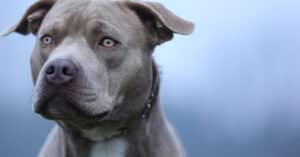Beaucerons and Rottweilers are both terrific guard dogs. They have beautiful short coats, protective nature, and are great for active families.
The Beauceron is generally respectful but may take some time to warm up around strangers. Beauceron can learn a huge number of different commands and rules in a short amount of time. The Rottweiler is famous for having a loyal, affectionate, sensitive, and protective personality. However, its behavior can become rebellious if it is not trained or socialized properly.
Let’s dive into all the differences between these breeds!
Comparing Beauceron vs Rottweiler
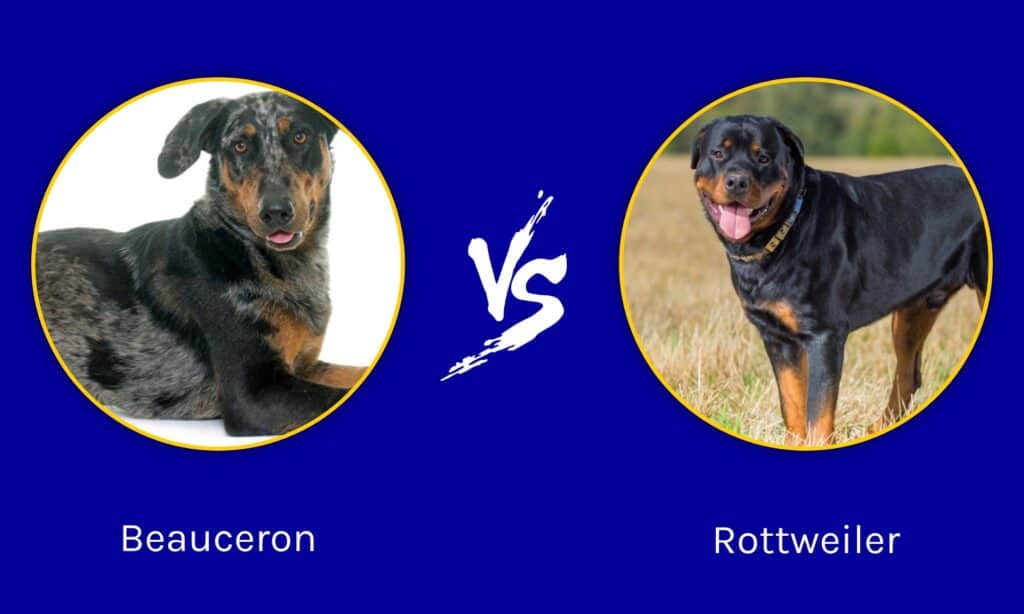
| Beauceron | Rottweiler | |
|---|---|---|
| Size | 24-27.5 inches, 70-110 pounds | 22-27 inches, 80-132 pounds |
| Appearance | Often has cropped ears. Fur is black with rust, tan, or gray and tan markings or harlequin | Often has docked tail. Fur is black with mahogany, tan, or rust markings |
| Lifespan | 10-12 years | 8-10 years |
| Temperament | May be reserved around strangers, protective | Affectionate, playful, extremely protective, adaptable |
| Trainability | Intermediate | Easy |
| Grooming | Weekly for most of the year, daily during shedding season | Weekly |
| Shedding Level | High | Moderate |
| Drooling Level | Low | Moderate |
| Energy Level | Very high | Moderate |
| Barking Level | Moderate | Low |
Key Differences Between a Beauceron and Rottweiler
The key difference between a Beauceron and a Rottweiler is temperament. While Rotties are more protective and make better guard dogs, Beaucerons tend to be more reserved around strangers.
Other differences include size, appearance, lifespan, trainability, grooming, shedding, drooling, energy level, and barking level.
Let’s delve into them in more detail below!
Beauceron vs Rottweiler: Size
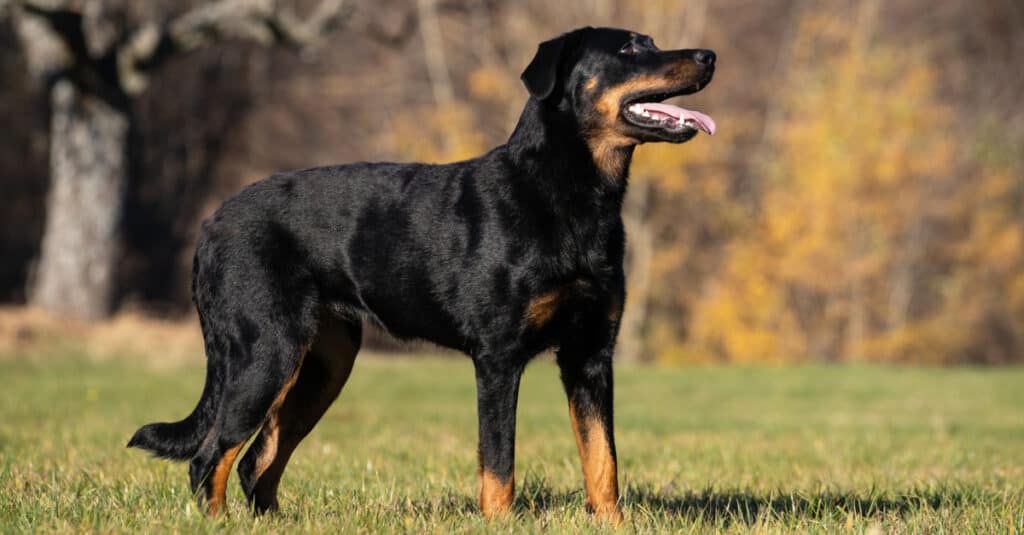
Beaucerons stand at 24-27.5 inches tall compared to a Rottweiler at 22-27 inches.
©Bildagentur Zoonar GmbH/Shutterstock.com
Beaucerons are just a little bit taller than Rottweilers, standing at 24-27.5 inches. Rottweilers are 22-27 inches tall.
Despite this, Rotties tend to weigh more, maxing out at 132 pounds. Beaucerons weigh up to 110 pounds.
Beauceron vs Rottweiler: Appearance
Looking at the two, you might think they seem remarkably similar! Though their coat can be the same colors, there are some differences.
Both breeds can have short, black hair with rust or tan markings. Rottweilers can also have mahogany markings, and Beaucerons can have gray and tan markings. Beaucerons can also be harlequin.
Unfortunately, both of these breeds are subject to unethical cosmetic procedures. While Rottweilers’ tails are often docked, Beaucerons often have their ears cropped.
Docking is when a dog’s tail is amputated. Ear cropping is when surgery is done on a dog’s ears to remove part or all of the outer ear, making the ears stand upright.
These procedures are painful for the dog to recover from and make it difficult for them to communicate with other dogs. Dogs use body language to communicate with one another, and a lack of a tail or constantly-upright ears can make that impossible.
Beauceron vs Rottweiler: Lifespan
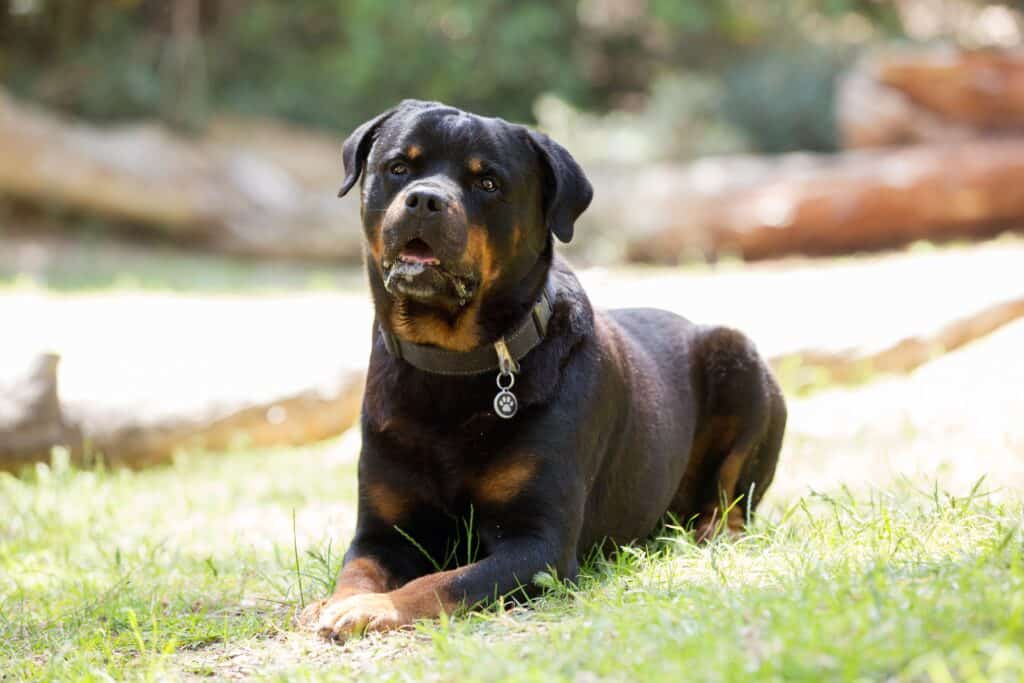
Rottweilers live just 8-10 years compared to Beaucerons at 10-12 years.
©McCann Michelle/Shutterstock.com
Beaucerons tend to live 10-12 years, while Rottweilers live 8-10 years. These are averages, however, and a particular dog might live shorter or longer than this.
Genetics plays a big role in a dog’s health and how long they live. So does their daily care. It’s important to feed them high-quality dog food, exercise them daily, and bring them for regular veterinary appointments.
Beauceron vs Rottweiler: Temperament
Beaucerons are protective guard dogs who may be reserved around strangers. While Rotties can also be stand-offish with strangers, they’ll be slightly more adaptable to these new experiences than Beaucerons.
It’s important to socialize dogs as young as possible to avoid fearfulness or aggression toward strange people. Introduce your pup to a variety of new people, places, noises, and experiences. Anything you’ll expect from your dog as an adult should be introduced to them as a puppy. This includes things like trimming their nails, looking in their ears, turning on the blender, and being out in public.
Despite being slightly friendlier with strangers, Rottweilers are actually the better guard dogs of the two. They’re alert and protective. Rottweilers also tend to be extremely affectionate with their families. They might love laying on top of you like a lap dog or following their favorite person all over the house.
Of course, Beaucerons love their families as well! They just show it in a different way and are less likely to be cuddly or clingy.
Because Rotties can be clingy, they can easily develop separation anxiety. Teach them while they’re young that being alone is safe and good by introducing the concept slowly.
Don’t expect these dogs to be alone for too long, either. They do best in families where someone is home most of the day.
Lastly, Beaucerons are less playful. Rottweilers are more likely to bring you toys and ask for some play time!
Beauceron vs Rottweiler: Trainability
Most Rottweilers are easy to train. They want to make you happy! However, they might also have a stubborn streak.
Beaucerons are also people-pleasers, but they have a lot of energy. In particular, they tend to jump and grab. Of course, you’ll want to train this out of them very early on.
Though your pup likely doesn’t mean anything by this behavior, they’re going to grow into a large dog! It’s vital that they don’t knock anyone over by jumping up and that they don’t bite at people’s skin or clothes.
Despite these challenges, both breeds are incredibly intelligent, fast learners. Go into training them with a positive attitude and patience. Never use harsh training methods such as physical punishment or dominance theory. These don’t work on any dog, and they can lead to fearfulness and aggression.
Instead, reward positive behavior and ignore unwanted behavior. For instance, let’s say your Beauceron is grabbing at your arm. You’ll want to remove yourself from the situation when they do this. Calmly walk away and shut a door between the two of you if needed, then return in a few minutes to give them a chance to behave more calmly. When they interact without grabbing, praise them and offer treats! Do the same when they bite appropriate things, like their toys.
Lastly, give them an acceptable outlet for the behavior if possible! In this case, they might like catching a ball thrown into the air.
Beauceron vs Rottweiler: Grooming Needs
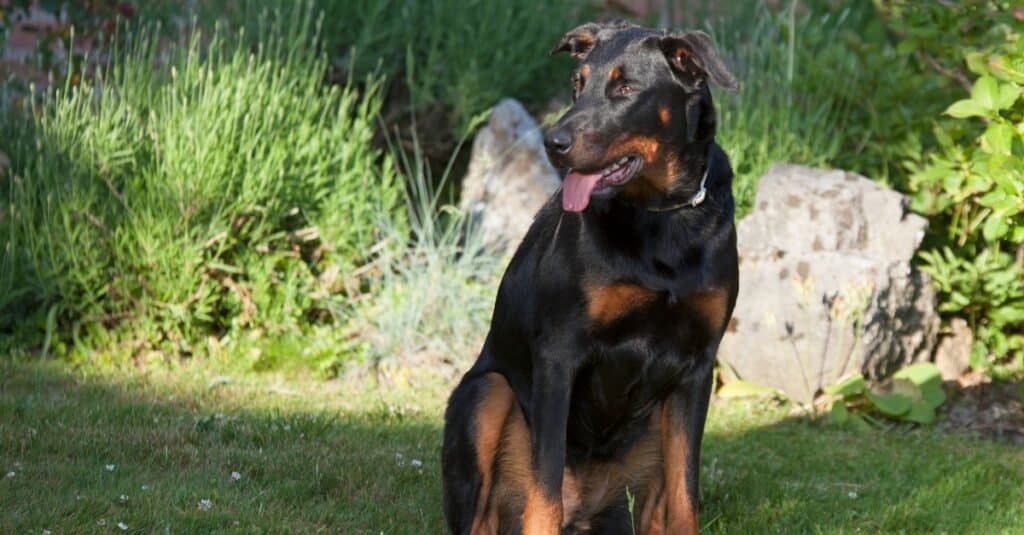
Beaucerons tend to shed more heavily than Rottweilers.
©iStock.com/stobi_de
Both breeds should be groomed once a week. Because they shed more, Beaucerons may take longer to groom. During shedding season, which typically occurs in the spring and fall for both breeds, Rottweilers will begin to shed a little more and require some extra grooming.
Beaucerons will shed plentifully and require daily brushing to keep their coat looking best. This will also help to keep shed fur from flying around your home and landing everywhere!
Beauceron vs Rottweiler: Shedding Level
Rottweilers are moderate shedders. They shed below average for most of the year and a little more during shedding season twice yearly.
Beaucerons shed profusely the entire year. They also have a shedding season twice a year, typically in the spring and fall, where they’ll shed even more heavily.
A vacuum and a lint roller will be your best friends during this time!
Beauceron vs Rottweiler: Drooling Level
Beaucerons may shed a lot of fur, but they barely drool. You won’t find puddles around your house to clean up with these dogs.
You likely won’t find a bunch of puddles with a Rottie, either—but they do drool moderately. The area around the water dish may get wet, and they might leave little puddles where they sleep!
Beauceron vs Rottweiler: Energy Level
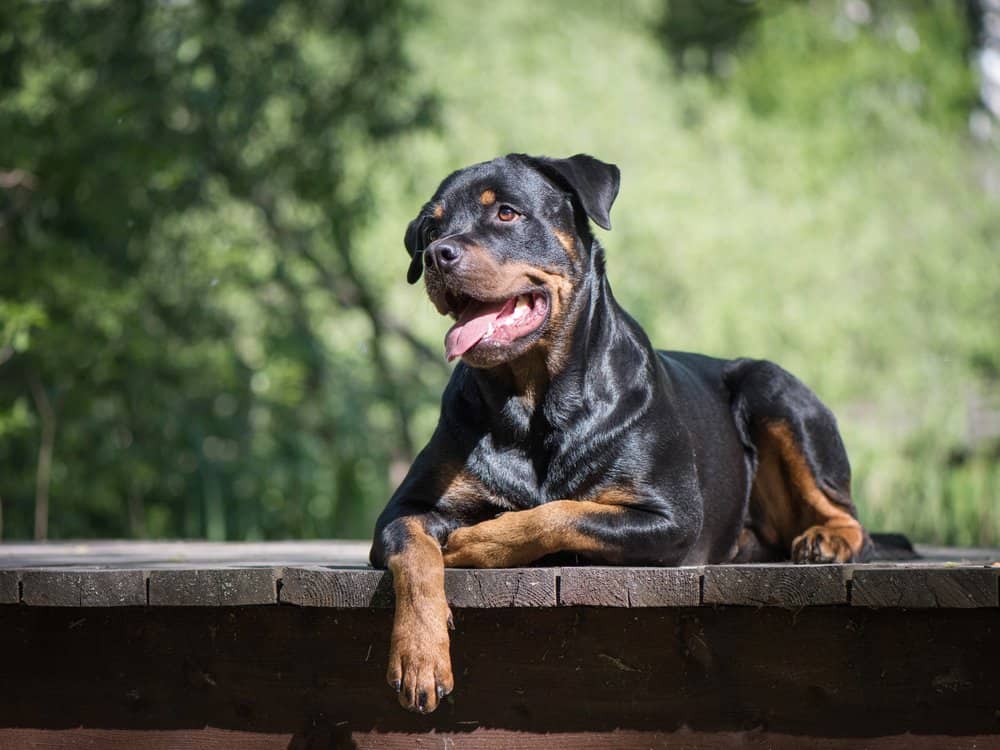
Rottweilers are active, but not as energetic as Beaucerons!
©EKATERINA SOLODILOVA/Shutterstock.com
Rottweilers need a moderate amount of exercise every day. They’re very versatile and can take part in many activities and jobs. Rotties are great for an active family.
Beaucerons are another level of active, though! They need a ton of exercise and benefit greatly from a variety of activities.
Because these breeds are so smart, they need lots of mental stimulation in addition to physical exercise. This is one reason variety is so important for a Beauceron.
Enrichment activities for these dogs can include puzzle toys, games in the backyard, and dog sports. They’ll also love going for runs, hikes, and exploring new locations.
Beauceron vs Rottweiler: Barking Level
Rottweilers bark to alert and don’t tend to be very noisy. They’re unlikely to develop excessive barking behavior. Beaucerons are moderate barkers, as prone to problem barking as the average dog. The problem is likely to arise if this intelligent, high-energy pup’s needs go unmet.
Bored dogs almost always find a way to cause trouble. Excessive barking is often an indication that your dog hasn’t gotten enough exercise or mental stimulation throughout the day. It can also be a training problem. Once you’re sure you’ve addressed their needs, you can train your dog to be “quiet” on command to help with the noise.
If your dog barks while you’re away from home, it’s likely a symptom of separation anxiety. In this case, you’ll need to address the underlying cause, which is the anxiety itself. This can be a difficult process, and sometimes you’ll have to get a professional involved.
The photo featured at the top of this post is © iStock.com/Jana Richter
Ready to discover the top 10 cutest dog breeds in the entire world?
How about the fastest dogs, the largest dogs and those that are -- quite frankly -- just the kindest dogs on the planet? Each day, AZ Animals sends out lists just like this to our thousands of email subscribers. And the best part? It's FREE. Join today by entering your email below.
Thank you for reading! Have some feedback for us? Contact the AZ Animals editorial team.





